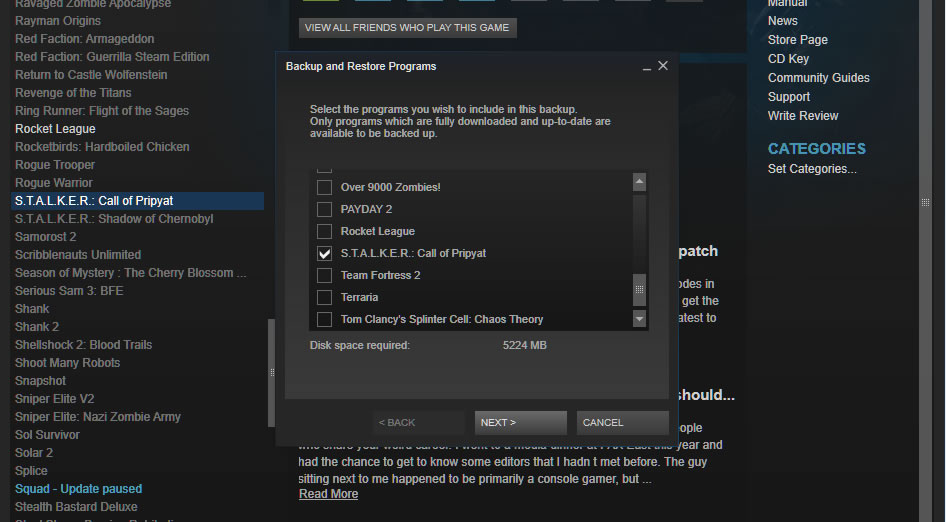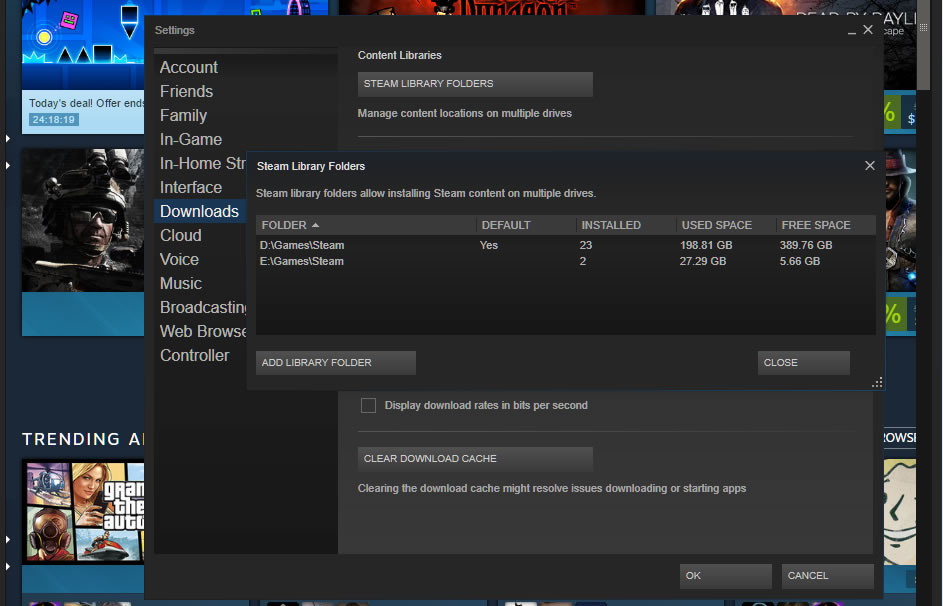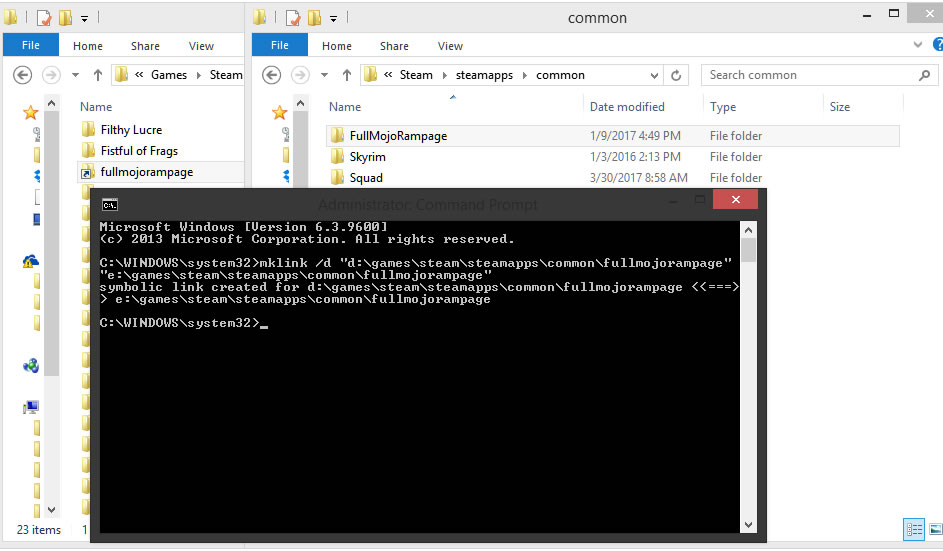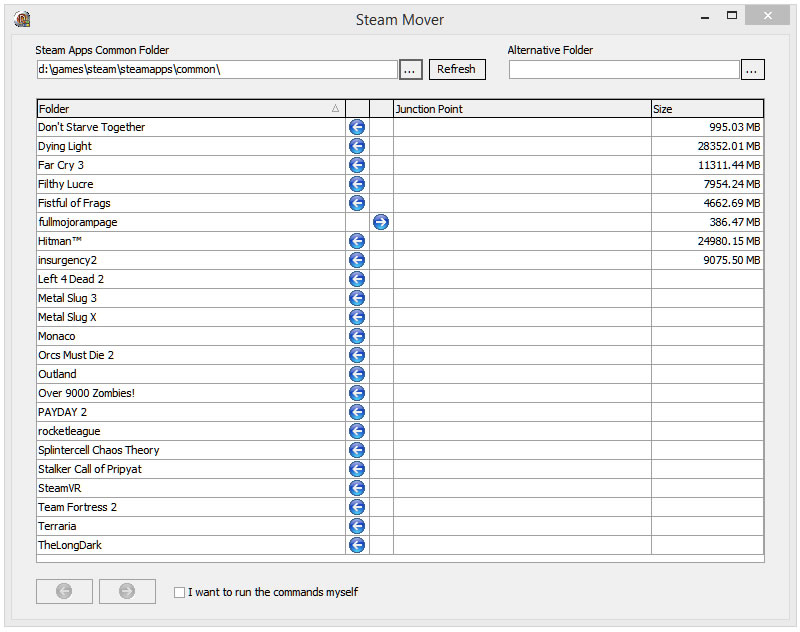Although solid state drives have Tayuansteadily increased in capacity, so too have the size of game installs. Today's triple-A titles commonly occupy upwards of 20GB with many approaching or exceeding 60GB, especially after accounting for downloadable content.
Ironically, it's often these large releases that benefit the most from the improved load times of a speedy drive, which is likely to be filled faster than you'd expect if it's on the smaller side of SSDs – e.g. a 250GB model would be stuffed with four GTA V-sized titles.
Fortunately, Steam has made it easier to move games from one location to another, no longer requiring you to open a Windows command prompt or download third-party tools, though we'll outline those methods, too, given that they still work.
This isn't mandatory but is nonetheless a worthwhile precaution. The most convenient way is simply copying your Steam or SteamApps folder (which is where your games are) to a backup directory via Windows Explorer. However, the Steam client also provides an integrated backup and recovery process that will let you select installed titles and store them as backup files. The tool splits the game data into CSM/CSD files that are sized suitably for fitting on CDs and DVDs, though you can also create one large save.
Getting there: Go to your Steam library > Right click on a game > Backup game files... > Select the installed games to backup and follow the prompts from there.

To restore these files as installed Steam games, head to Steam > Backup and restore games... > Restore a previous backup > point it to your backup files > continue with the prompts.

The easiest way would be repeating the last step above by using Steam's integrated feature for moving installation folders, though this method works, too:
If a game has become corrupt, you can also have Steam automatically seek and swap damaged files by verifying the integrity of your local data:
If it's been a while since you've done this, note that it doesn't completely freeze the Steam client anymore so you can continue chatting etc.
Around the time SSDs were taking off (over a decade ago!), Steam didn't provide a built-in method for moving games between drives – this feature was only added in 2017. Instead, gamers relied on the Windows command mklink, which links one directory to another so that when software interacts with location A, it's redirected to location B. In other words, Steam will think the game is in its original directory, but it will instead run from the new drive.

This approach still works but is considered obsolete because of the features now built into Steam:
Undoing that link is as simple as deleting the link in C:\Steam\steamapps\common.
Tip:You should be able to see the link you made by entering the dir command.
Download Steam Mover – Before Valve's client could handle it, this was the go-to utility for moving Steam games to a new drive. It offers an easy interface to relocate your games and create a link in Windows (like the manual mklink approach outlined above). Version 0.1 of Steam Mover was released in April 2010 and although it's never received an update, it has accumulated hundreds of thousands of downloads in that time and it's rare to find a complaint.

Download SteamTool Library Manager – Functionally identical to Steam Mover – both by interface design and in methodology, relying on NTFS junctions to create a link between the new and old locations (note that this also means it only works on NTFS partitions).
Download Gamesave Manager – GSM can automatically detect the save data for 4,764 games and makes it easy to backup, restore and transfer game saves. However, the utility also provides other features including the ability to move Steam games (it too uses symbolic links or NTFS junctions).
 Skype is finally shutting down
Skype is finally shutting down
 Tesla's 'Full Self
Tesla's 'Full Self
 Netflix's 'Wednesday' is full of Edgar Allan Poe references. Here's a bunch.
Netflix's 'Wednesday' is full of Edgar Allan Poe references. Here's a bunch.
 Does penis size actually matter?
Does penis size actually matter?
 NYT Connections Sports Edition hints and answers for May 18: Tips to solve Connections #237
NYT Connections Sports Edition hints and answers for May 18: Tips to solve Connections #237
 Chill, that terrifying amusement park ride video is fake
Chill, that terrifying amusement park ride video is fake
 Elon Musk says Twitter will give 'amnesty' to suspended accounts from next week
Elon Musk says Twitter will give 'amnesty' to suspended accounts from next week
 The DNC's latest attempt at being relatable on Twitter has everyone cringing
The DNC's latest attempt at being relatable on Twitter has everyone cringing
 Bomb Envy
Bomb Envy
 Does penis size actually matter?
Does penis size actually matter?
 How to Settle Down with Dystopia
How to Settle Down with Dystopia
 I'm a sucker for Rob Zombie and his whole deal
I'm a sucker for Rob Zombie and his whole deal
 'Andor' Season 2 will answer these burning questions
'Andor' Season 2 will answer these burning questions
 How the 'Andor' finale end credits scene changes Star Wars
How the 'Andor' finale end credits scene changes Star Wars
 Amazon Prime Grubhub deal: Save $10 off orders of $20 or more
Amazon Prime Grubhub deal: Save $10 off orders of $20 or more
 Mom’s mug collection finally gets the display it deserves, and the internet is in love
Mom’s mug collection finally gets the display it deserves, and the internet is in love
 What are 'Bones and All's Oscar chances?
What are 'Bones and All's Oscar chances?
 Germany vs Japan livestream: How to watch FIFA World Cup 2022 Group E live
Germany vs Japan livestream: How to watch FIFA World Cup 2022 Group E live
 Bomb Envy
Bomb Envy
 Portugal vs Ghana livestream: How to watch World Cup 2022 Group H live
Portugal vs Ghana livestream: How to watch World Cup 2022 Group H live
Everything coming to HBO Now in October 2019PepsiCo CEO Indra Nooyi reveals why she writes letters to parents of her senior executivesWhy you should get a 4K streaming box even if you don't have a 4K TVNASA scientist Kate Marvel lays out the realities of rising seasSurprise! Facebook is reportedly still tops when it comes to disinformation.ELLE's new video challenging gender stereotypes is going viral for all the right reasonsAmazon's newest kidThe #BodegaStrike is giving New Yorkers all the feelsELLE's new video challenging gender stereotypes is going viral for all the right reasonsStop using Internet Explorer immediately; also, why are you still using Internet Explorer?Warner Bros. defends ‘Joker’ as theaters ban masks and toy weaponsThe best and worst moments of the 2019 EmmysIvanka Trump posts another video of her daughter singing in Chinese and it workedIs my chronic fear of horror movie jump scares actually a phobia?Everything coming to HBO Now in October 2019Oprah on TaTV's 8 best selfMattel releases line of genderMove over, Puppy Bowl: Bunny Bowl is here to out'The Last of Us 2' hands on demo: Ellie gets the story she deserves An Enormous Amount of Pictures: In the Studio with Miriam Katin by Yevgeniya Traps A Dinner in Moscow by Jonathan Wilson The Funnies, Part 5 by Tom Gauld The World of Tomorrow by Sadie Stein 'I'm a Virgo' review: Boots Riley's larger Sex workers fear targeting under Instagram's terms of service 75 years of the Windrush generation: These 2 new podcasts are a must Lello Bookstore, Porto, Portugal by Sadie Stein On the Anniversary of Lord Byron’s Death by Clare Fentress How to log out of the Amazon app Outside the Paris Pavilion by Sadie Stein Congresswoman's dog named, named 'Fauci,' dominates CNN interview In the Beginning by Sadie Stein In Memoriam: E. L. Konigsburg by Sadie Stein The Funnies, Part 2 by Tom Gauld If Heavy, Then Lift by Alia Akkam The Tiny Gatsby by Sadie Stein Help Wanted by Sadie Stein Reading in the Bath: Solved by Sadie Stein Google's Blob Opera lets anyone compose a beautiful melody with ease
2.6777s , 10151.3828125 kb
Copyright © 2025 Powered by 【Tayuan】,Exquisite Information Network